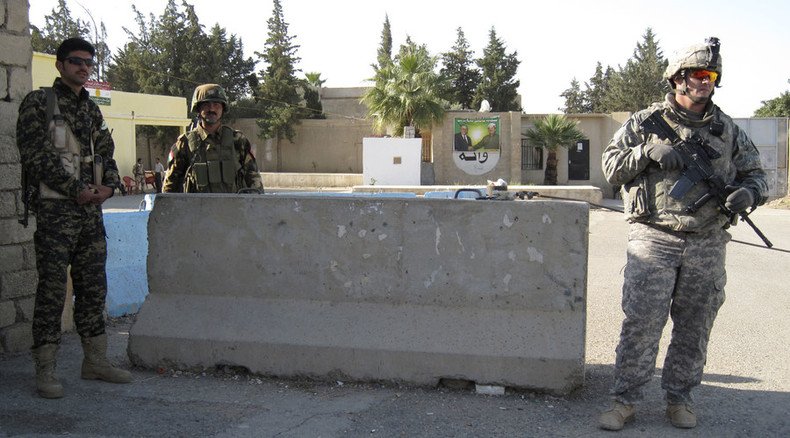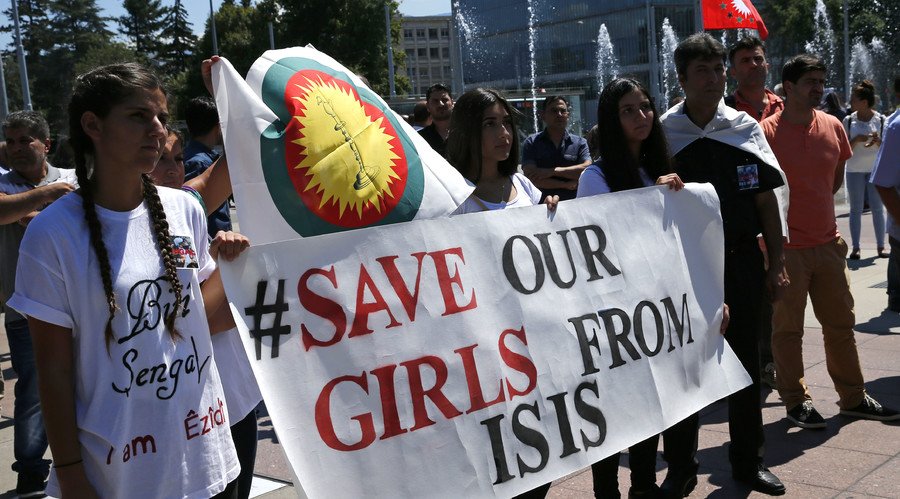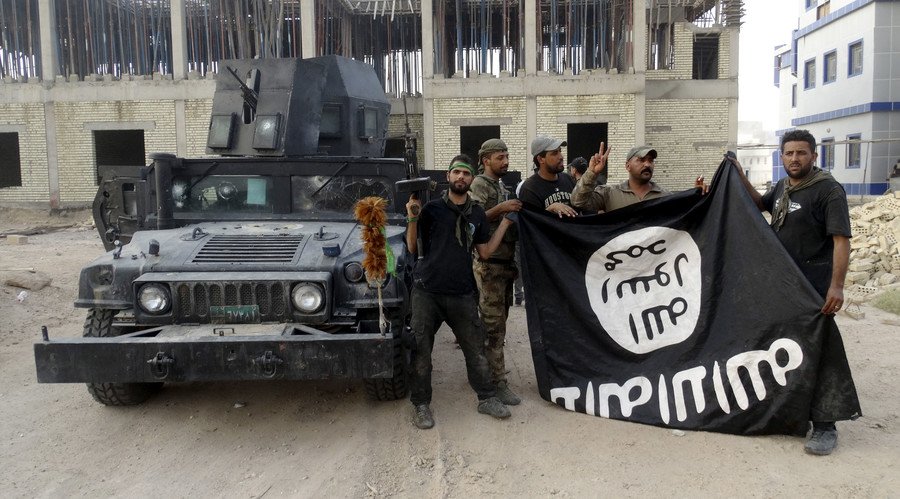No mission creep: US troops put ‘sneakers not boots’ on the ground in Iraq

It is recognized that besides 35,000 US troops on the ground in Iraq, there are an unknown number of other Special Forces and CIA forces on the ground, says Phyllis Bennis, Director of the New Internationalism Project at IPS, Washington DC.
VIDEO: How US Special Forces & Kurds rescued hostages from ISIS in Iraq https://t.co/iah4tRD4Iipic.twitter.com/TB5k9sBEzZ
— RT (@RT_com) October 26, 2015RT: Can the Pentagon still realistically maintain its 'no boots on the ground' stance given that an American soldier has been killed apparently in action?
Phyllis Bennis: I think the question of US boots on the ground has been true for over a year now. We’ve had at least 35,000 troops in Iraq that went back last year and I don’t think most people in this [US] country recognize the difference any more than they would in Russia if and when Russian troops or volunteers are sent to Syria; if somebody tries to claim they are not combat troops, nobody would believe that either. These are troops engaged in combat. They are advising, they are supporting, they are arming, they are training and they are fighting with forces on the ground. So, the notion that there are ‘no boots’ is simply not the case. We also know that besides 35,000 US troops on the ground in Iraq there are an unknown number of other Special Forces and CIA forces on the ground. Maybe they wear sneakers rather than boots. But there is no question that US forces have been fighting directly in Iraq for more than a year now.
RT: US elite forces are taking part in direct action against ISIS. Why not just deploy troops?
PB: Deploying troops will make everything worse. Keeping fighting forces - whether elite or not - on the ground, having planes in the sky bombing - whether they are Russian or American planes - is making everything worse and not better. There is no military solution to the war in Syria and Iraq. And pretending that somehow we can say that, as President Obama does over and over again, and yet acting as if there is a military solution and we are going to do it - meaning sending troops, sending elite trainers, bombing, drone strikes, etc. - makes all of the other possibilities that are so necessary - whether it is diplomacy, negotiations, greater humanitarian support – none of those things are possible as long as we are carrying out military activities. There has to be an end to the militarism, then we can go about the process of new negotiations to end this war.

RT: Would the US public support even a limited ground operation at this point?
PB: I think there is widespread skepticism among the American people. But on occasion, what we’ve seen is that the so-called ‘CNN factor’ - what we now might call the ‘twitter factor’ - does kick in on a case-by-case basis and a demand, to quote ‘do something,’ emerges. The problem we face here and I am afraid in other countries in the world, in Europe, in Russia and elsewhere ‘doing something’ too often is equated with ‘doing something military’. So, instead of saying "Yes, this is a terrible situation for whoever" – whether it is the Yazidis who were trapped on Mount Sinjar, whether it is a group of hostages being imprisoned by ISIS. These are terrible situations that require response. They don’t necessarily require a military response. And when military responses are used it makes the other responses - that in the long run are going to be the only way of ending this war - it makes them even more difficult, sometimes impossible.
RT: This is thought to be the first time US troops have been engaged in direct ground combat with ISIS. Is this a sign of mission creep or of information leak?
PB: I don’t think this is mission creep, I think this is mission running. There is no question the US has been directly engaging in a war against ISIS at various points against others, whether it’s the Al-Qaeda force known as the Al-Nusra front, whether it is against parts of the regime of President [Bashar] Assad in Syria. The US has been engaged militarily for quite some time. So, this is not mission creep except to the degree that they are acknowledging that this is outside the official mission and now we are going to match that by moving to the new definition of the mission. This is and has been a very serious problem since August of 2014. The problem isn’t new. Acknowledging it may be new, but that is not the problem. The problem is the militarization of this conflict on all sides. We need a cease fire; we need an arms embargo on all sides.

US troops were involved in the mission from the start; they were trained for nothing other than combat missions, David Swanson, US-based journalist and activist, told RT. They are in Iraq for combat that has been going on since 2003, he added.
RT: The Pentagon says the US soldiers were supposed to stay back. Judging by the video, is that what they did?
David Swanson: I don’t know from the video, but from the fact that one of them died; from the fact that they were very much involved in the mission from the start; from the fact that they were trained for nothing other than combat missions despite being labeled ‘non-combat soldiers’ it is quite clear what they are there for. They are there for the combat that hasn’t ended since 2003 - even if it has been more from the air in recent months than on the ground.
RT: Why did American soldiers take part at all? Aren't the Kurdish fighters capable?
DS: The Kurdish fighters appear from the reports we’ve been given about this particular incident to have been perfectly capable - they killed an unstated number of ISIS troops or people in the process and I don’t know if it was intentional or not. And one American died, no Kurdish did. Perhaps, it was the Americans who were incompetent, I don’t know. But clearly, the US loves to be involved. Loves to train, loves to support, loves to lead, loves to arm and was choosing to be involved whether it imagined the Kurds were incapable or for other reasons.
RT: If the current role of US soldiers in Iraq potentially exposes them to battle, how is that a non-combat role?
DS: It is just twisting language, just like bombing Libya was not going to be war or hostilities and therefore not fall under US laws banning presidential wars because no US troops would be on the ground - even though US troops were on the ground. Here they choose to call it ‘non-combat’ even though it is soldiers with arms, trained for nothing other than combat, taking part in combat and then saying: “Well, he didn’t mean to, he was supposed to stay back.” It is combat. But this is part of a war that has been ongoing since 2003 that in recent months has involved primarily combat from the air. The Iraqi deaths don’t make the news the way a single American death does. And it has been counterproductive from day one and has been generating more enemies than it is killing. A fact that Russia should have pay more attention to be for jumping into this itself.
LISTEN MORE:
The statements, views and opinions expressed in this column are solely those of the author and do not necessarily represent those of RT.












